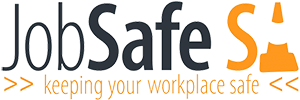Australia’s ageing population is a major transformation that will impact on both economic and social policy. The aged care industry is an industry on the verge of a great increase in the demands associated with the provision of health and disability services, and family and community care. With more Australians needing the facilities that aged care workers provide, there will be a greater strain on these provisions. These strains can expose aged care workers to an increase in the risks associated with their occupation.
INJURIES
The majority of workplace injuries in the aged care industry result from musculoskeletal injuries such as back injuries which are related to high risk manual handling tasks such as lifting and moving people and pushing patient trolleys.
Other causes of injuries within this industry are:
- hazardous substances contact
- slips on wet or food contaminated floors
- struck by something (e.g. sharp knives or falling objects)
- stress from the work environment
HAZARDS –WORKPLACE VIOLENCE
Workplace violence in the aged care industry is any incident where an employee is physically attacked or threatened in the workplace. This attack could come from fellow employees, patients/residents, family members or workplace intruders.
What sort of things could be considered as workplace violence?
- someone threatening to hurt you
- objects being thrown at you
- pushing, shoving, punching, kicking
- being touched or any other type of indecent physical contact
- racial abuse
- unwelcomed sexual comments
| Hazard: Workplace Violence |
| Common Causes: Working alone or at night increases the risk of violence Aggression from clients, residents and/or their family and friends Intruders |
| Controls / Options to assist control: Preliminary assessments of the residents Reviewing the nursing care plan of a resident (medication, pain management) Ensure that staff work in pairs with high risk clients Provide training for staff concerning:
Evasive self-defence techniques |
| No cash or cheques are on site after office hours (indicate with signage) Employees have a readily available method of raising the alarm or personal duress alarm Night security patrols and nurses station to face the front gate Visitors log book |
MANUAL HANDLING
Manual handling is the most common cause of injuries for employees working in aged care facilities, accounting for 58 per cent of all injuries. Nurses, carers, cleaners, laundry, maintenance, administration and kitchen staff are all at risk from manual handling injuries.
The most commonly injured part of the body is the back, followed by the shoulder, arm, hand and neck.
Statistics from the National Occupational Health and Safety Commission for the aged care industry show that strains and sprains made up three-quarters of all the workers’ compensation injuries that occurred.
| Hazard: Manual Handling (e.g. pushing, pulling lifting) |
||||||||||||||
Common Causes:
|
||||||||||||||
| Controls / Options to assist control: Adopt a No Lift, No Injury policy and use lifters Ensure beds are selected in consultation with staff, and routinely maintained Provide staff training on safe use of beds Use bed mover to move beds Report all faults Record and update, resident physical function in care plans Check care plans for changes Promote incident reporting Training in good work practice Improve workplace and load design Use of appropriate mechanical aids (e.g. trolleys) Talk to suppliers and see if loads can be delivered in small bags Ensure furniture is fitted with wheels to allow pushing instead of lifting Adequate staffing (e.g. 2 person transfers for unreliable or unsteady patients) Apply safe design principles in the development of new facilities and equipment |
||||||||||||||
STRESS
Workplace stress is a very real occurrence in the modern workplace, with the incidence of stress-related claims having risen dramatically in the last ten years. Workplace stress derives specifically from conditions in the workplace. These conditions may either cause stress initially or aggravate the stress already present from other sources. These may arise from the content of work, for example work which is monotonous or lacks variety, or too much or too little work to do. Work that results in a person feeling unable to cope and unsupported may lead to illness, injury and job failure.
| Hazard: Manual Handling (e.g. pushing, pulling lifting) |
||||||||||||||
Common Causes:
|
||||||||||||||
| Controls / Options to assist control: Look for signs of stress from other colleagues e.g. coming into work late, change of work habits, mood and personality Monitor your working environment for signs of stress Consult your employees on all workplace issues Handle all complaints form employees and customers seriously Provide training for employees on complaint resolution Encourage an atmosphere of trust where people feel safe to come forward if they feel stressed Ensure adequate and appropriate staffing levels Review skill mixes and ensure they are adequate to meet the workplace demands and client needs |
||||||||||||||
Useful links
Note:
Many companies have been found in breach of their OHS obligations to employees. Take an informative look at the successful prosecutions by SafeWork SA
Acknowledgements:
SafeWork SA resource Aged Care Industry-Generic Hazards Register.
SafeWork SA.
Australian Government: Department of Health
